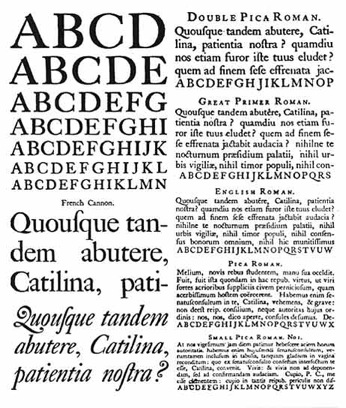

He commenced business in a separate Foundry with two fellow workman who helped to find the capital 1764 – 1792. Jackson left the navy in 1763 and continued to be employed in Thomas Cottrell, Neveil's court 1759–1785 Foundry for a short time. In 1759 Jackson entered the Navy leaving Cottrell to carry on alone. They started a foundry of their own in direct competition to their employer in 1757. Caslon had two apprentices in his Foundry, Thomas Cottrell and Joseph Jackson. John James, William Caslon I and John Baskerville were left by consolidation as the only three representatives of the trade in the country. James ultimately combined under his own direction nine old English Foundries.

A later and important purchase was the foundry of Thomas Grover in 1758. He acquired moiety of half of Robert Mitchell and Jacob Ilive in 1740. John James in the period 1716–1764 also built up by purchase what became the leading English type foundry of the 18th and early 19th centuries. The other half of that business was purchased by John James, son of Thomas James. William Caslon I founded the Caslon Foundry in 1739, based on what previously had been Godfrey Head's (1685–1700). Several revivals of the Caslon types are widely used today. The Caslon types fell out of favour in the century after his death, but were revived in the 1840s.

Caslon's types became so popular that the expression about typeface choice, "when in doubt, use Caslon," came about. Ĭaslon's typefaces were inspired by the Dutch Baroque types, the most commonly used types in England before Caslon's faces.Ĭaslon typefaces were immediately popular and used for many important printed works, including the first printed version of the United States Declaration of Independence. His first Latin typefaces were a roman and italic cut in the pica size (12pt), of a style that was fully realized by the publication of his foundry's specimen sheet in 1734. Though his name would come to be identified with an enduring style of Latin alphabet, Caslon's first typefaces were what contemporary typefounders called "exotics." His first design was an Arabic made at the English size (14pt), commissioned by the Society for Promoting Christian Knowledge before 1725, followed by a Hebrew created for William Bowyer in 1726, and a Coptic for Wilkins first used in 1731. A specimen sheet of typefaces and languages, by William Caslon I, letter founder from the 1728 Cyclopaedia


 0 kommentar(er)
0 kommentar(er)
